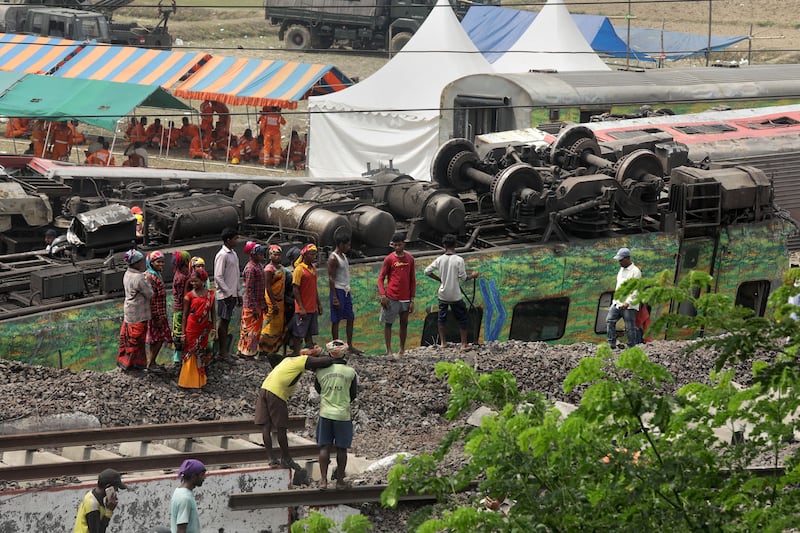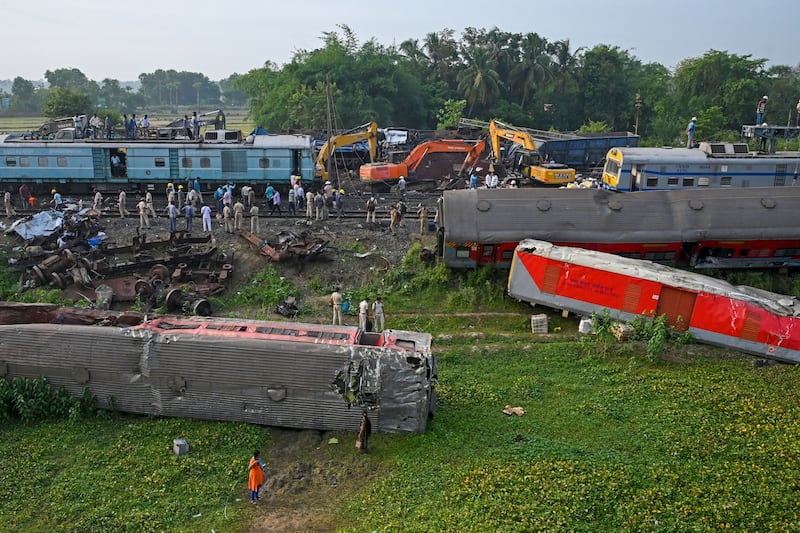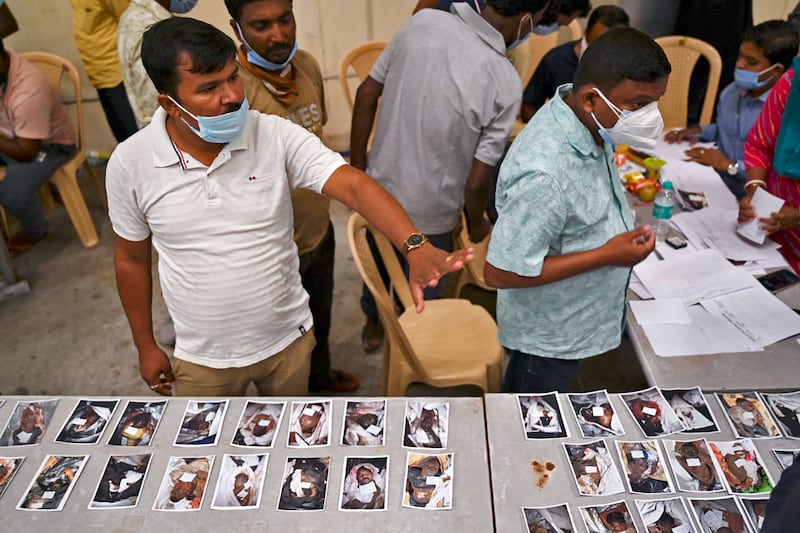As the Coromandel Express train left Shalimar station at 3.20pm on Friday, its carriages were packed to the rafters with migrant labourers, daily wage workers, students and commuters, many seeking opportunity hundreds of miles away in Chennai, Tamil Nadu, the train’s final destination.
Among them was Chandan Roy (38) a mason, who was heading south for employment. Yet he would never make it. Instead, on Sunday morning, his father-in-law, Santosh Roy (60) was among those desperately searching for his body among piles of the dead.
The rail crash in eastern India, which killed at least 275 people and injured hundreds of others, was caused by an error in the electronic signalling system that led to a train wrongly changing tracks, India’s railways minister said on Sunday.
“Who has done it and what is the reason will come out of an investigation,” Ashwini Vaishnaw said.
READ MORE
He said the signalling error sent the Coromandel Express down the wrong tracks on Friday night, causing it to plough into a stationary freight train at such speed that several carriages were thrown into the air. The oncoming Howrah Superfast Express was also hit and derailed.

By Sunday, the death toll from the devastating three-way collision stood at at least 275 people, with more than 1,000 injured, making it India’s worst train disaster in two decades. Speaking on Saturday after he visited the site, India’s prime minister Narendra Modi said the government was “with families in their grief” and vowed that “no one would be spared” in the investigation.
Yet even as the wreckage of the carriages was cleared and fresh tracks were laid, many relatives were struggling to locate the bodies of their loved ones who had been onboard. Some of the dead lay covered in white sheets in a nearby high school that had been converted into a temporary morgue, and the Odisha state authorities warned they were running out of cold storage to keep the bodies.
Santosh Roy said he had rushed to Balasore district of eastern Odisha state, where the collision took place, after hearing news of the accident and being unable to reach his son-in-law over the phone.
But after 30 hours of desperately putting a photo of his son-in-law in the faces of officials and searching through the bodies piled up in hospitals and in the school hall, he had been unable to locate Chandan.
“I am tired looking at so many dead bodies and injured,” he said. “I looked around the accident spot as well several times but there is no trace of him. There are some bodies which cannot be recognised by their face. But I will find him. Back home, his six-year-old son is waiting.”

Looking down at the photo of his son-in-law, his voice broke. “I feel so helpless, I just hold his picture at times and keep looking at it,” he said.
Prateek Geeta Singh, a police official, said 50 ambulances had shifted more than 100 unclaimed bodies to AIIMS hospital in Bhubaneswar, the main city in Odisha state, where they would be kept until they are identified.
However, doctors at AIIMS warned they were also running out of space for bodies, even as authorities brought in additional coffins and ice. “It is a real challenge for us too, to preserve the bodies here as we have a facility to keep a maximum of 40 bodies,” said a hospital official.
Doctors also warned that the bodies were often disfigured beyond recognition. “The bodies are mutilated,” said one doctor speaking to Press Trust India. “I came across just one head of a human being and no other body parts to go with it.”
Aamina and Mohammad Imran were among those forced to trawl through body bags in search of their nephew Mohammad Majar, a college student, who was returning to Kolkata after visiting his aunt and cousins.
“We have been looking everywhere,” they said in despair. “We went to most of the hospitals where dead bodies are being kept and where injured are being treated, but our nephew is not there. He was an amazing person and did not deserve this.”
They said the process of trying to find their nephew had been traumatic. They described getting little help from the authorities, instead having to plead with hospital staff to let them try to find their nephew among the dead.
“We have been looking at hundreds of bodies, some just limbs – what a terrible fate they met – but there is nothing of my nephew,” said his aunt Aamina Imran. “The bodies have been kept on the floor, in an undignified way. I am praying to God that we find him, even just something of him.”

The crash happened at a time when Mr Modi is focusing on the modernisation of the British colonial-era railroad network in India, which has become the world’s most populous country with 1.42 billion people.
Despite government efforts to improve rail safety, several hundred incidents occur every year on India’s railways, the largest train network under one management in the world.
In 1995, two trains collided near New Delhi, killing 358 people in one of the worst rail crashes in India. In 2016, a passenger train slid off the tracks between the cities of Indore and Patna, killing 146 people. Most rail crashes in India are blamed on human error or outdated signalling equipment.
More than 12 million people take 14,000 trains across India every day, travelling on 40,000 miles (64,000km) of track. – Guardian. Additional reporting: PA











